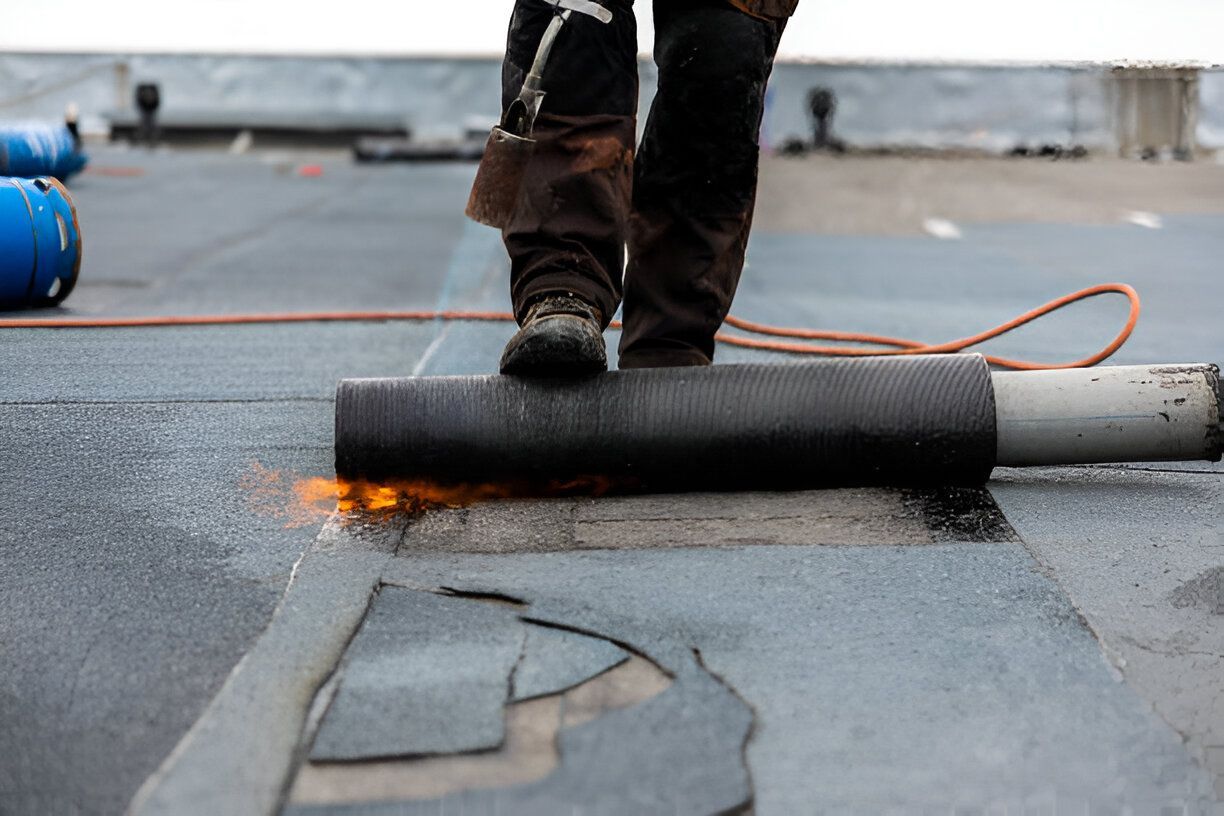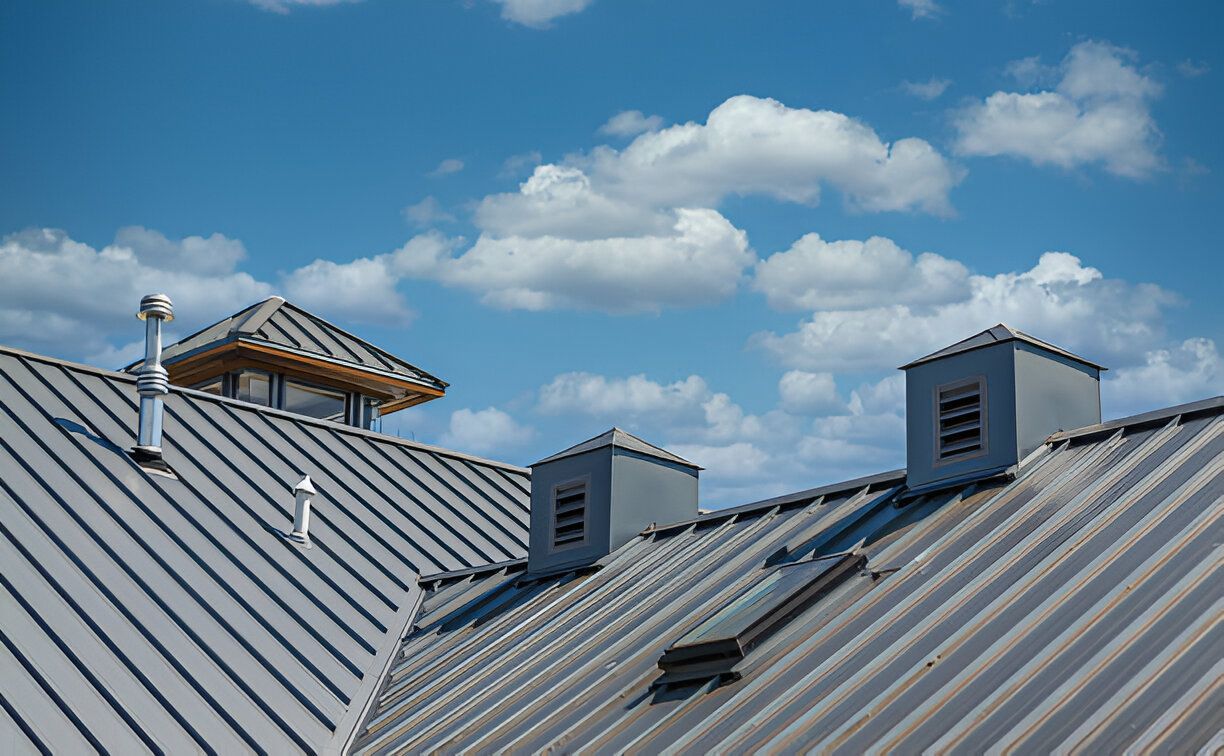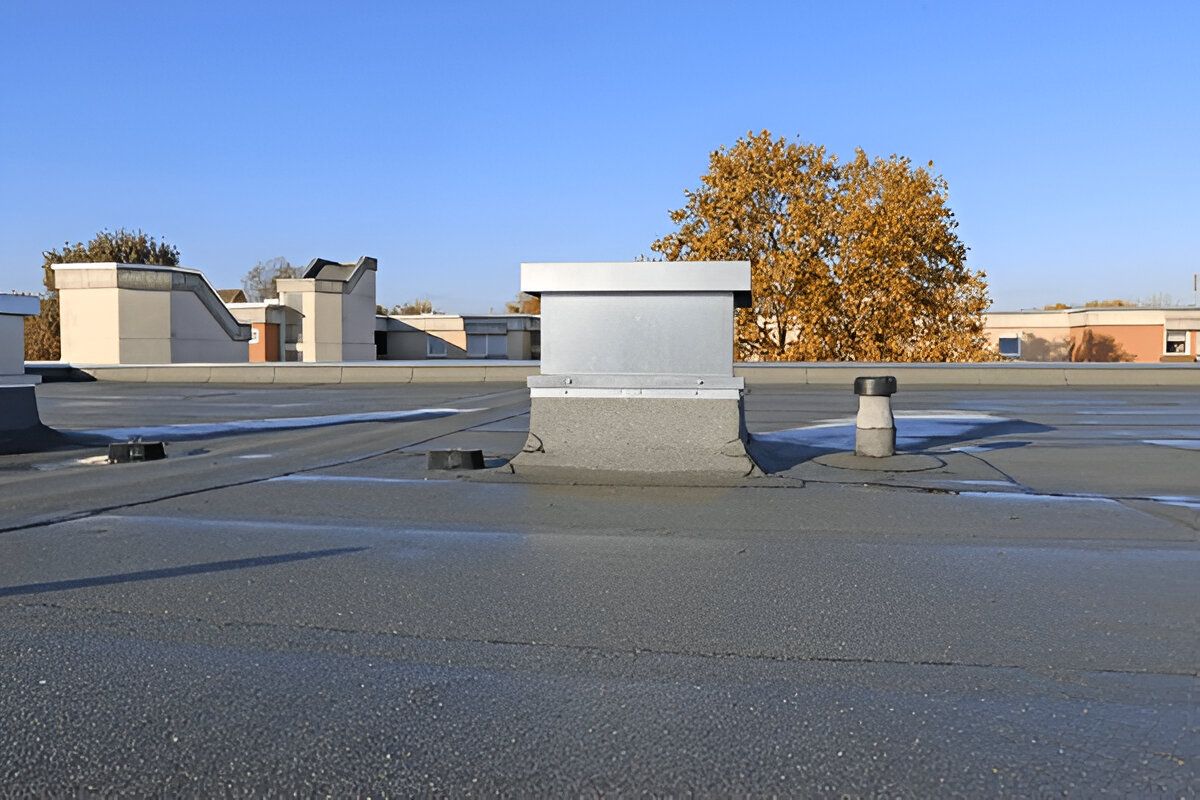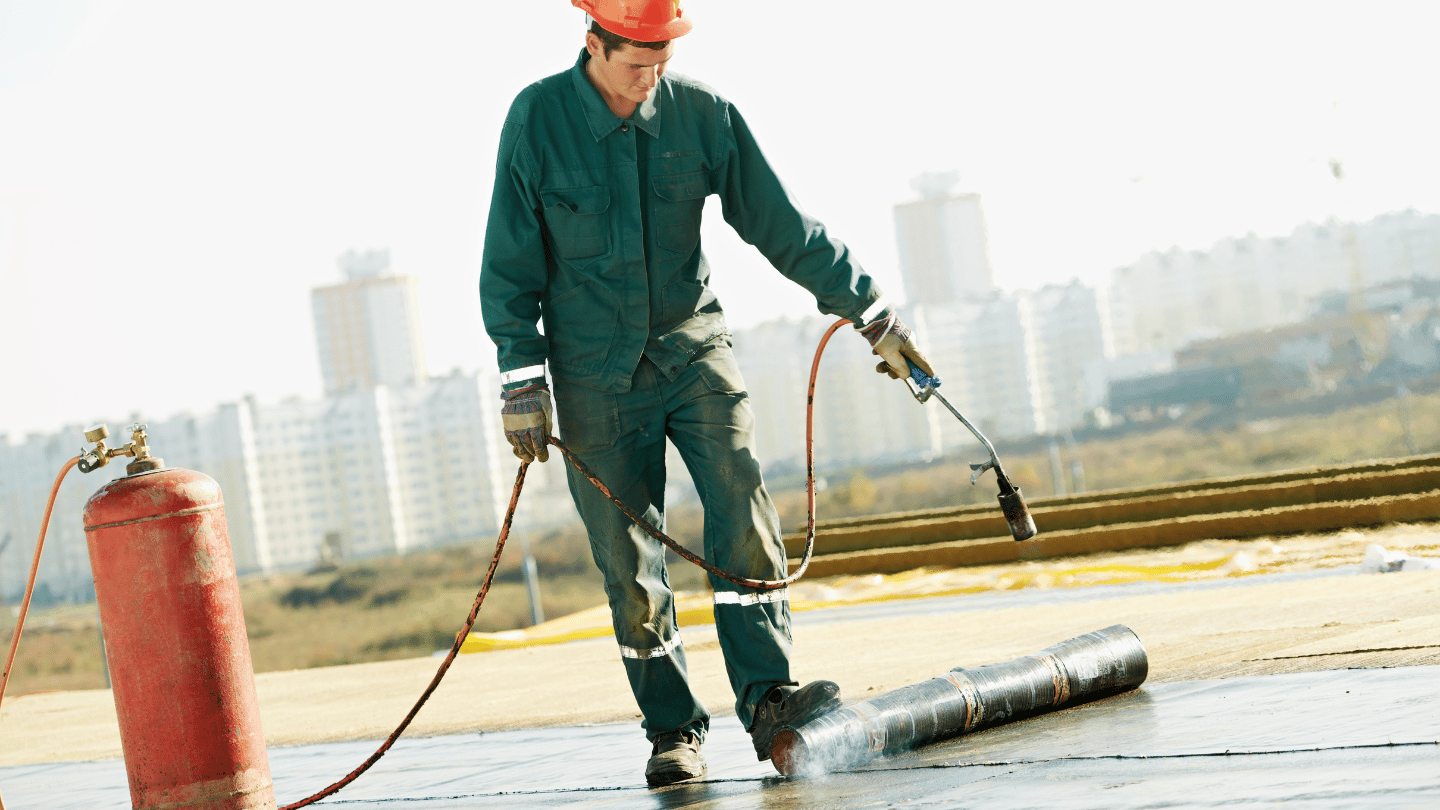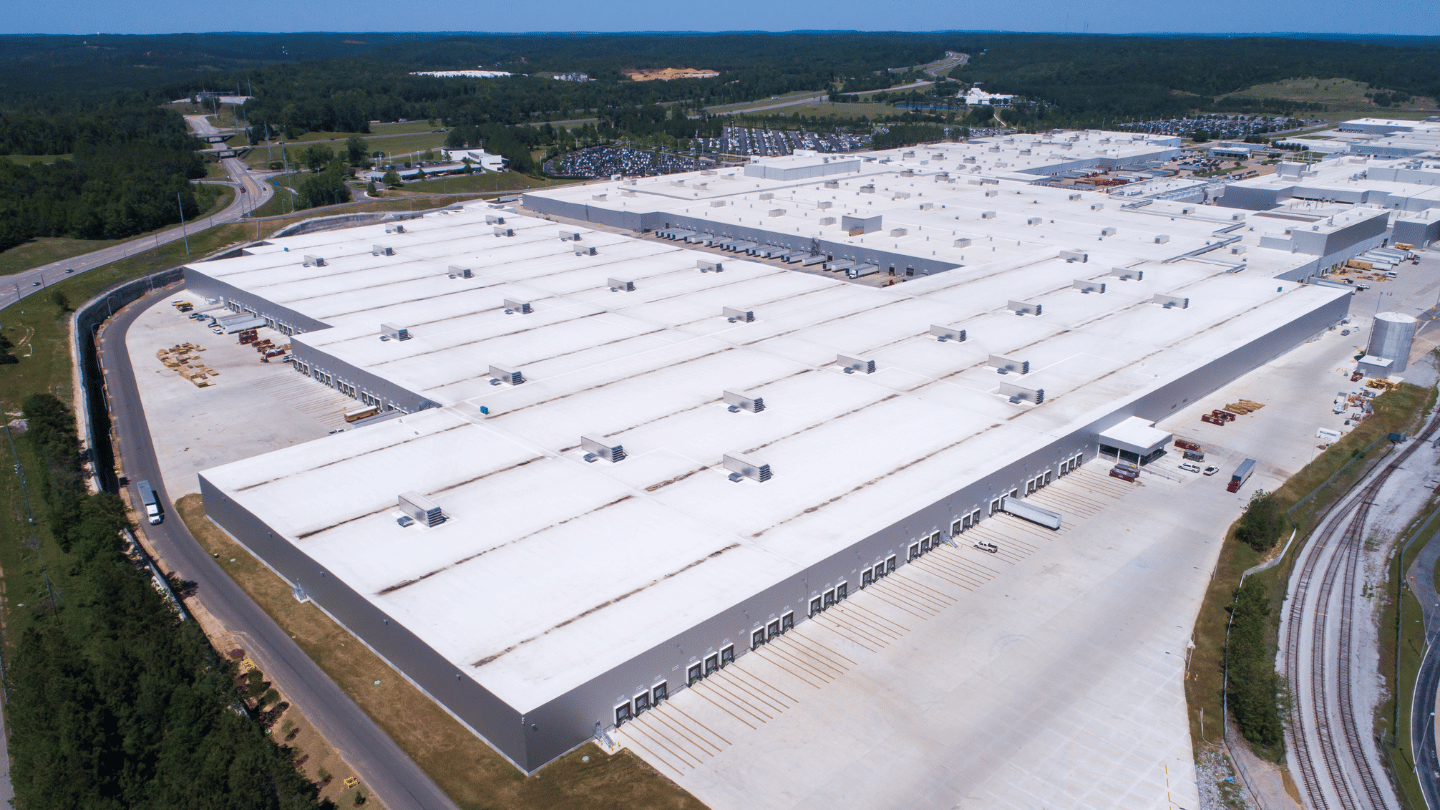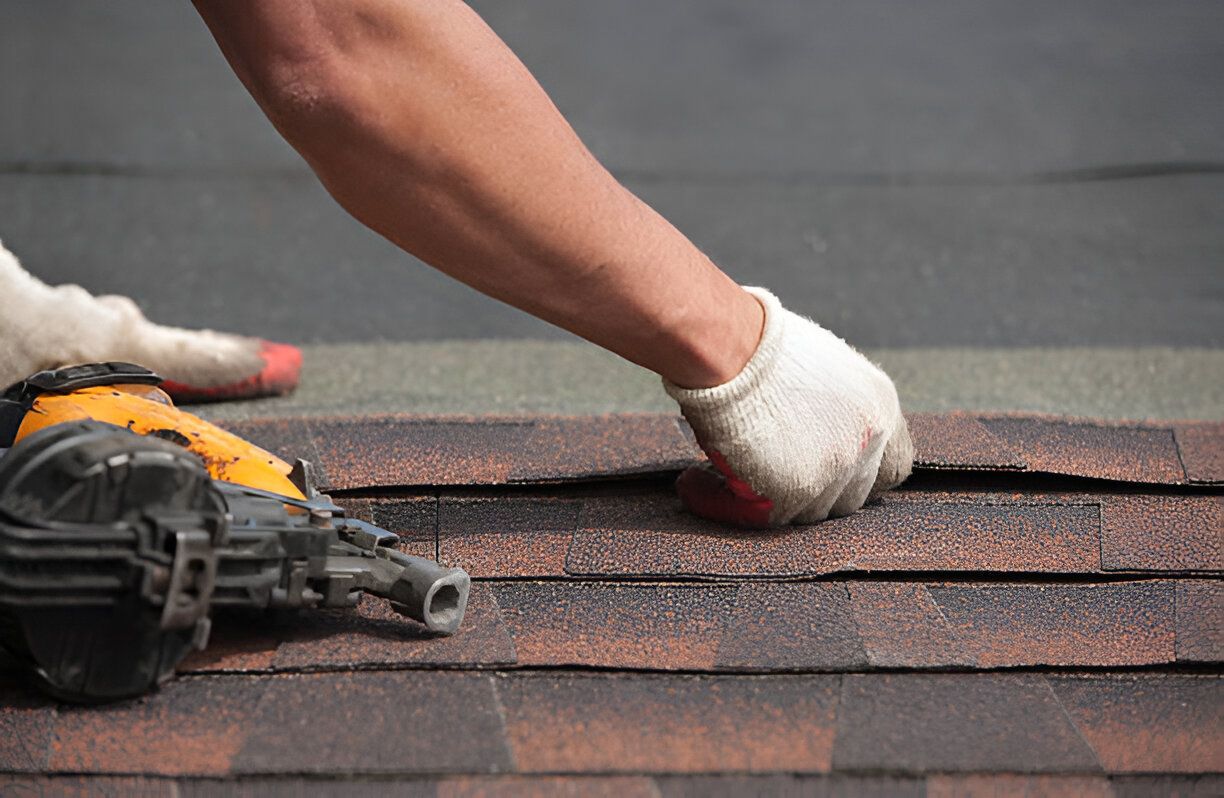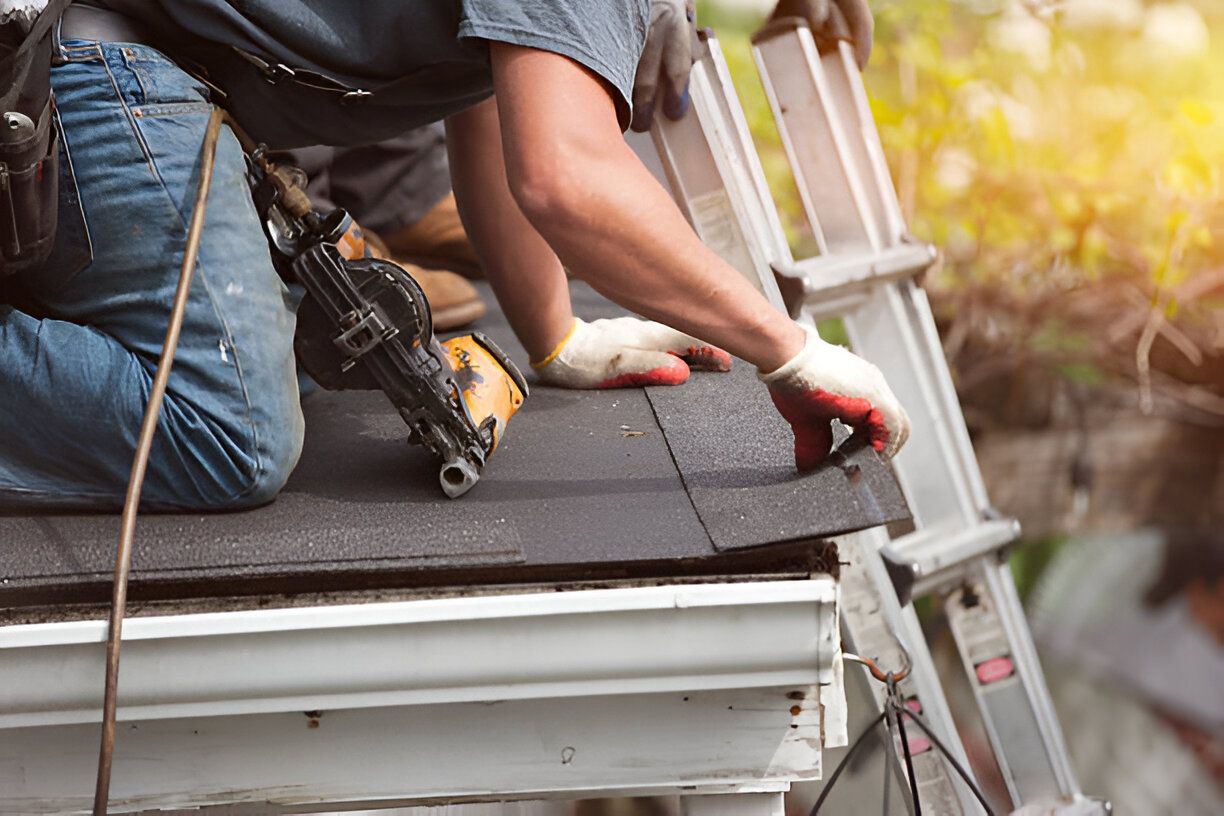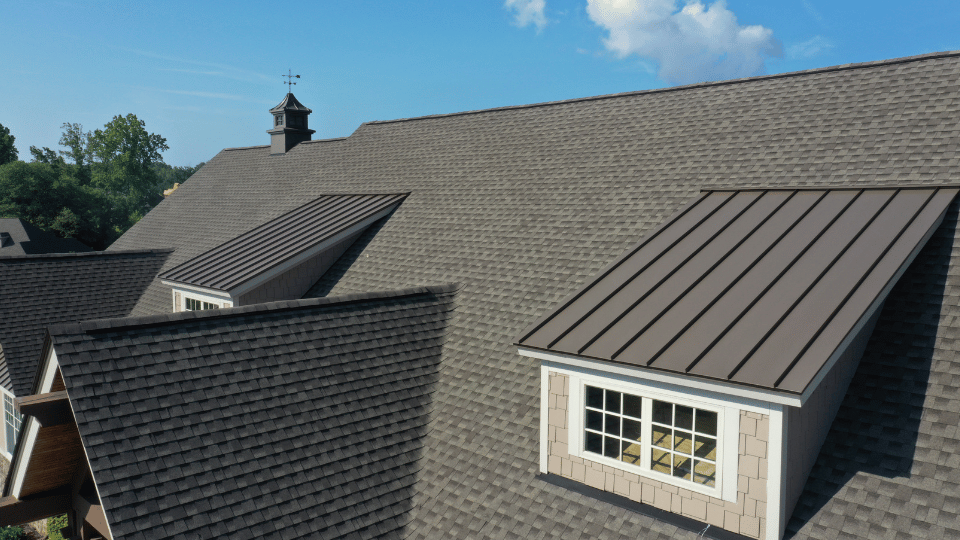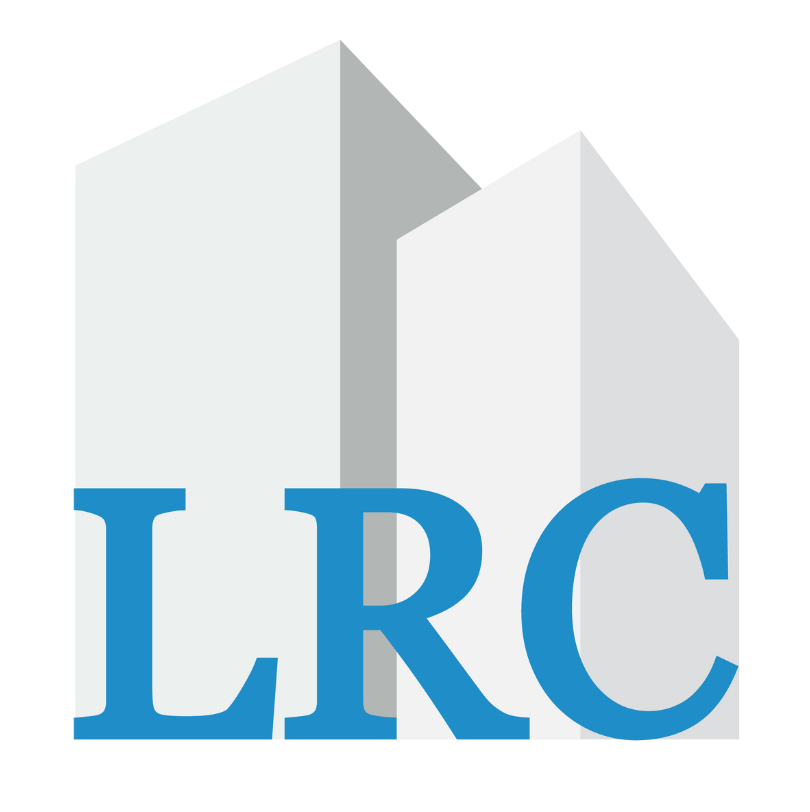What Is a Commercial Roof Called?

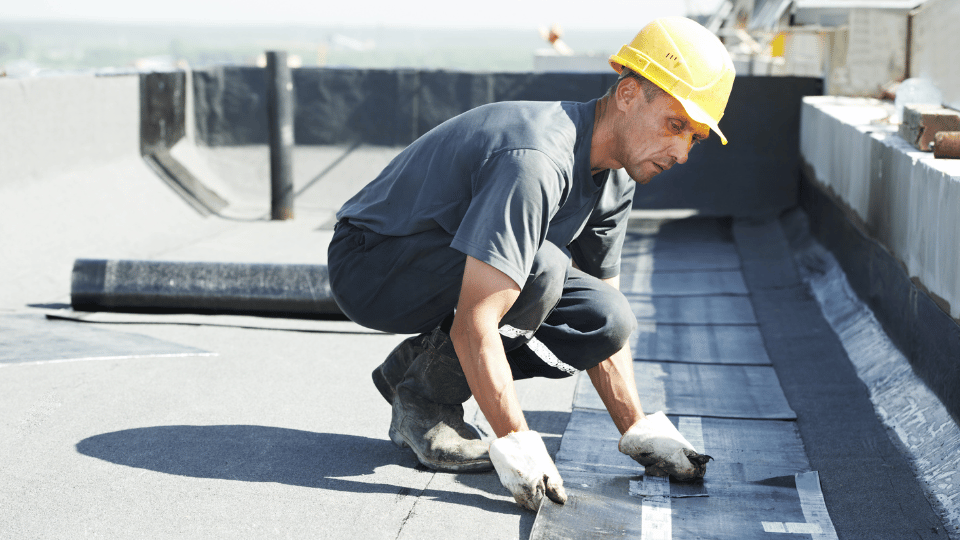
What Is a Commercial Roof Called? A Comprehensive Guide to Commercial Roofing Systems
A commercial roof typically refers to flat or low-slope roofing systems designed for commercial buildings like warehouses, offices, and retail stores. In this guide, you’ll learn about what a commercial roof is called, the different types of commercial roofing material, their unique features, and how to choose the best one for your needs.
Key Takeaways
- Commercial roofs are typically flat or low-slope, designed for efficient space use and installation of rooftop equipment.
- Selecting the right roofing material, such as single-ply membranes or metal systems, is crucial for durability, energy efficiency, and climate resilience.
- Regular maintenance and professional installation are key to extending the lifespan of commercial roofs and minimizing repair costs. Educating building owners about the variety of roofing options, the necessity of inspections, and understanding warranties is essential for informed decision-making.
What Is a Commercial Roof Called?
A Comprehensive Guide to Commercial Roofing Systems
Commercial roofing systems are typically designed with either a flat or minimal slope profile, setting them apart from the more sharply inclined roofs found on residential structures. This design is strategically adopted due to the larger footprint of commercial properties and their space optimization requirements. But what distinguishes a commercial roof, and how do these systems meet the specific demands of commercial buildings?
When selecting materials for commercial roofs, factors such as architectural style and local weather patterns play an essential role in decision-making processes. Commercial flat roofing is a popular choice for low-slope roofing options in commercial buildings, emphasizing factors like lifespan, durability, energy efficiency, costs, and maintenance. Progress in roofing technology has led to cutting-edge solutions that not only prioritize eco-efficiency but also exhibit resilience against severe temperatures. These technological strides are vital for maintaining both longevity and functionality across diverse climates.
Amongst various options available for covering large-scale facilities, single-ply roofing stands out due to its flexible nature coupled with robustness—a combination highly valued in the industry. Equally adaptable is modified bitumen roofing, which offers convenience through multiple installation techniques under different meteorological conditions. Comprehending these varied types of roofing installations empowers proprietors of commercial entities to choose wisely regarding their unique infrastructural necessities.
Introduction
Recognizing the intricacies of commercial roofing is crucial in Flower Mound, Texas. Due to its distinctive climatic challenges and environmental factors, Texas necessitates robust roofing systems that are capable of resisting severe weather conditions while preserving the integrity and performance efficiency of commercial structures. The roofing industry has seen significant advancements, with modern solutions like modified bitumen and single-ply systems replacing traditional methods. It’s vital for business proprietors to comprehend these requisites thoroughly as they play a pivotal role in governing their facility’s upkeep expenses and overall operating budget.
Opting for premium-grade roofing materials extends beyond mere initial investment. It encompasses long-term financial benefits by curtailing maintenance outlays and reducing energy expenditures down the line. Neglecting roof upkeep can escalate into costly repair bills and cause interruptions to daily business functions. Adopting appropriate roofing techniques along with selecting optimal materials stands as a calculated approach toward fostering enduring sustainability and heightened operational effectiveness within your enterprise.
Defining Commercial Roofing Systems
The selection of the appropriate commercial roofing system is a crucial aspect of any commercial building, tailored to align with specific structural needs and climatic conditions. Commercial roofs differ from residential ones, often being flat or modestly sloped to better accommodate the expansive size of commercial structures as well as support various rooftop installations including HVAC systems.
A wide array of materials are available for use in constructing these roof systems, each selected based on factors like architectural design and regional weather patterns. Contemporary options for commercial roofing boast resilience against severe temperature fluctuations and promote energy efficiency. Single ply roofing stands out among these choices due to its adaptability and robustness, making knowledge about such roofing systems essential when choosing an apt roof for your business facility.
Types of Commercial Roofs
Based on their incline, commercial roofs are classified into three main categories: flat, low-slope, and steep-slope. These variations serve different purposes and cater to various types of commercial structures.
Many commercial facilities opt for flat roofs because they maximize space utilization and are straightforward to install. Low slope roofs attract those seeking efficient water drainage without the higher costs associated with steep slope alternatives. Although not as prevalent, steep slope roofing is appropriate for certain architectural designs and provides superior drainage features. Residential flat roofs, similar to commercial flat roofs, use materials like TPO, PVC, and EPDM, and require proper insulation and maintenance.
Flat Roofs
Many commercial structures, such as manufacturing plants, storage facilities, large retail outlets, multi-family housing complexes, government buildings and educational institutions, commonly feature flat roofs. These roofs are designed with a minimal incline of approximately half an inch for every foot to ensure proper drainage and avoid water accumulation. The layout also simplifies the process of mounting equipment on the roof, which makes it an advantageous option for assorted commercial uses.
Flat roofs offer another substantial benefit in terms of incorporating sloping insulation systems that not only aid in directing water away from the surface but also improve thermal resistance or R-value. The roof deck plays a crucial role as a surface to which various roofing materials can be applied, influencing factors such as attachment methods and overall roof maintenance. This enhancement leads to better heat retention properties and increased energy efficiency within these buildings. For those who own these properties, utilizing tapered insulation translates into decreased expenses related to cooling services while promoting a more eco-friendly building atmosphere.
Low Slope Roofs
Commercial structures often opt for low slope roofs, which feature an incline of no more than three inches per foot. This design selection is favored because it simplifies upkeep by improving drainage capabilities and lessening the potential for water accumulation that can lead to damage compared to completely flat roofing.
This architectural choice is deemed both pragmatic and economically advantageous for a multitude of commercial properties, given its functional benefits in roof design.
Steep Slope Roofs
Roofs with a steep slope are recognized for their significant slant, which facilitates the efficient flow of water off the structure. Such roofs are well-suited to commercial properties that prioritize superior drainage and seek a unique architectural appearance. Metal roofing systems excel in this context due to their robustness, resistance to fire, and visual charm.
A variety of materials including aluminum, steel, copper, and zinc can be used in metal roofing systems. These options provide both long-lasting performance and aesthetic flexibility. They possess reflective qualities that bounce back ultraviolet rays resulting in enhanced energy efficiency by lowering cooling expenses associated with maintaining a metal-roofed facility.
Although installing a metal roof requires greater initial expenditure compared to other types of roofing systems, its enduring advantages render it an economically sound choice for commercial buildings over time.
Common Commercial Roofing Materials
Selecting the right materials for a commercial roof is essential as it impacts its longevity, energy-saving potential, and overall functionality. The selection typically varies based on the architectural design of the structure and local climate conditions. Recent technological improvements in roofing systems have introduced innovative materials that not only improve efficiency but also offer greater resilience against harsh weather.
For various types of commercial roofs, options like single-ply membranes, modified bitumen, built-up roofing (BUR), and metal roofing systems are frequently employed. Each type presents distinct advantages tailored to different requirements specific to each commercial building situation. Recognizing these alternatives enables one to choose wisely ensuring compatibility with their particular demands concerning a building’s roof system.
Single-Ply Membranes: TPO, PVC, & EPDM
Commercial roofing often employs single-ply membranes, which are divided into two categories: thermosets and thermoplastics. Among these, TPO (Thermoplastic Polyolefin) is crafted from a mix of polypropylene and ethylene-propylene rubber. This composition enhances its durability and contributes to energy conservation by reflecting UV rays. Businesses looking for an economical roofing alternative that also assists in reducing energy costs may find TPO particularly suitable.
Another robust option in commercial roofing materials is PVC (Polyvinyl Chloride). PVC roofing stands out for its resilience against ultraviolet light, pliability, and resistance to fires—and it proves especially useful for eateries and industrial structures situated within moist climates due to these properties. Despite the advantages of PVC roofs like enhanced longevity compared to other choices on the market, they do come at a higher price point. Presenting installation challenges under extremely cold temperatures that could result in leakages.
EPDM (Ethylene Propylene Diene Monomer), yet another choice within single-ply membranes renowned for low slope roofs owing to its flexibility and toughness shares numerous benefits similar to those found among other types but does have drawbacks such as being more susceptible punctures rendering EPDM less aesthetically appealing with somewhat utilitarian look when applied atop buildings or facilities where appearance might be considered critical factor consideration during selection process commercial roof coverings.
Modified Bitumen Roofing
Modified bitumen roofing systems are comprised of asphalt that has been improved by the inclusion of materials such as rubber or plastic and Strengthened with fiberglass reinforcement. This composition grants them robust protection against severe weather conditions, exposure to ultraviolet rays, and physical damage like punctures. These attributes contribute to their considerable longevity. They can be installed in various ways, including torch application for sealing seams or through self-adhering techniques which enhance their adaptability.
In hybrid configurations where modified bitumen is combined with built-up roofing elements, there’s often an application of hot-mopped glass fiber felts for superior performance outcomes. Some commonly utilized membranes within Atactic Polypropylene (APP) Modified Bitumen Roofing systems are Armourplast Classic and Armourplast Granular types. For commercial structures requiring roofs that strike a balance between enduring durability and cost-effectiveness, these systems stand out as a dependable selection. Asphalt shingle roofing, while popular and affordable for commercial buildings with sloped roofs, offers diverse styles and colors but has limited durability in extreme weather conditions.
Built-Up Roofing (BUR)
For more than a hundred years, built-up roofing (BUR) systems have enjoyed widespread use across North America. The process incorporates the application of fiberglass rolls along with hot tar in succession, forging a multi-tiered structure that bolsters the roof’s resilience and long-term robustness. The system allows for customization through varying the count of layers or ‘plies,’ tailoring it to meet particular durability needs.
The advantages provided by BUR systems are noteworthy. They possess an excellent capability to withstand thermal shock and offer high-grade resistance against external fire sources. These roofs fend off damage from UV radiation effectively, which plays a significant role in their extended lifespan.
Despite their enduring nature, BUR installations come with higher costs and carry certain installation-related hazards that must be considered.
Metal Roofing Systems
Metal roofs offer a robust and visually adaptable choice for commercial structures, with standing seam roofing and exposed fasteners being the primary varieties utilized in such settings. These metal roofing systems come in an assortment of materials including aluminum, steel, copper, and zinc—each providing distinctive advantages and economic factors to consider.
When properly cared for, metal roofing systems have the potential to endure beyond 100 years, representing a significant investment over time. In commercial applications specifically, steel stands out as the preferred material for metal roofs due largely to its impressive durability attributes. Despite bearing higher initial costs than some alternatives, their superior energy efficiency coupled with long-term sustainability renders them an economical option over their lifespan.
Choosing the Right Commercial Roof System
When selecting an appropriate commercial roof system, it’s important to evaluate various elements such as the purpose of the building, prevailing weather conditions in the area, warranty coverage desired, robustness and efficiency in energy use. Flat roofs are favored for their cost-effectiveness during installation and simpler upkeep routines, often making them a choice selection for expansive commercial structures. In contrast, steep-slope roofing systems provide superior water runoff capabilities and can give buildings a distinctive architectural appeal albeit being less prevalent.
For those considering low slope roofing options on their commercial properties, factors like expected service life span durability efficiencies related with usage off resources will be crucial components evaluating viable choices trustworthy services typically include warranties providing peace of mind owners concerning future complications Consistent proactive maintenance activities lead diminished risks severe damages adverse climate occurrences whilst extending overall lifespan off this key structural component.
Grasping significance along with ratings pertaining insulating qualities inherent to the market could greatly influence not only expenses related to heating and cooling but general ambient levels comfort premises deploying single-ply approaches toward you establishments covering requirements present additional benefits offering prolonged usability paired requirement minimal intervention post-installation opting suitable ensures sustained effectiveness essential protection real estate investments.
The Importance of Professional Roof Installation
Employing proficient commercial roofers can significantly reduce future repair expenses by enhancing the resilience of the roof against environmental elements. These professional contractors comply with stringent safety standards throughout the installation process, protecting both workers and those inside the building. Utilizing seasoned roofing specialists for your commercial roofing project ensures timely completion of work, reducing interference with business activities. Opting for a roof replacement is an essential action to preserve your building’s structural soundness in accordance with industry norms.
Lancaster Roofing boasts considerable expertise in dealing with a range of well-known commercial roofing systems, catering to varied customer requirements effectively. It is vital that professional installment takes place to ensure that these commercial roofs exhibit long-term durability and optimal functionality.
In summary, expert execution of roof installation not only fortifies the structural integrity but also delivers lasting reassurance for owners of commercial properties.
Maintenance & Inspection of Commercial Roofs
The upkeep and consistent examinations of commercial roofing systems are essential for their durability and optimal functioning. Maintaining these roofs in good condition boosts energy efficiency and can increase the value of the associated commercial properties. It is advised to perform inspections twice yearly, which allows for early detection of issues that could lead to reduced repair expenses and an extension of the roof’s service life.
It is particularly important to inspect a roof after any storm events, as severe weather conditions may inflict damage that might not be immediately noticeable. To address this need, Lancaster Roofing provides free-of-charge inspections tailored to evaluate the specific needs of each individual commercial property.
With diligent maintenance, EPDM roofing has been known to achieve lifespans reaching 50 years, rendering it one of the most enduring single-ply materials available on today’s market for constructing an EPDM roof.
Why Choose Lancaster Roofing for Your Commercial Roofing Needs
Lancaster Roofing has earned a reputation for their dedication to superior service and the courtesy they extend to customers throughout roofing endeavors. Ensuring customer delight is at the forefront of their mission, as they offer top-tier roofing systems custom-fitted for each client’s specific demands.
With an eye on catering to the distinct needs of various commercial environments, Lancaster Roofing crafts personalized strategies. They also present no-cost quotes, enabling clients to explore and comprehend their choices in commercial roofing without any financial commitment.
Summary
To summarize, grasping the variety of commercial roofing systems and materials is vital for choosing an appropriate roof for your commercial property. It’s imperative that proper installation followed by consistent maintenance are carried out to guarantee the extended lifespan and efficiency of the roofing system.
Lancaster Roofing excels as a reliable ally in delivering customized Flower Mound commercial roofing solutions designed to address the specific requirements of different types of commercial properties. Deliberate thoroughly on your available options for a roofing system that provides robustness, enhances energy efficiency, and yields savings over time.
Frequently Asked Questions
What are some common issues that commercial roofs face?
Commercial roofs often deal with water pooling, membrane tears, and structural damage from mold or severe weather.
Regular maintenance can help prevent these issues.
How often should commercial roofs be inspected?
To keep your commercial roof in top shape, aim for inspections twice a year, ideally in the spring and fall.
This proactive approach helps identify issues early and prolongs the life of your roof.
What types of roofing services does Lancaster Roofing offer for residential properties?
Lancaster Roofing provides roof repairs, replacements, and maintenance specifically for residential properties.
They’ve got you covered for all your roofing needs!
What is the address of Lancaster Roofing & Construction?
You can find Lancaster Roofing & Construction at 1401 Spinks Rd, Flower Mound, TX 75028.
Why is professional roof installation important?
Professional roof installation is essential because it guarantees durability and optimal performance, which ultimately saves you money on future repairs and ensures compliance with safety standards.

